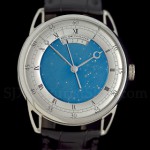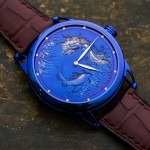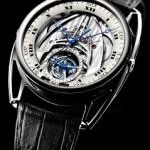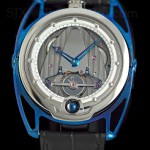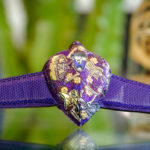De Bethune Introduces the DB Eight
A return to basics.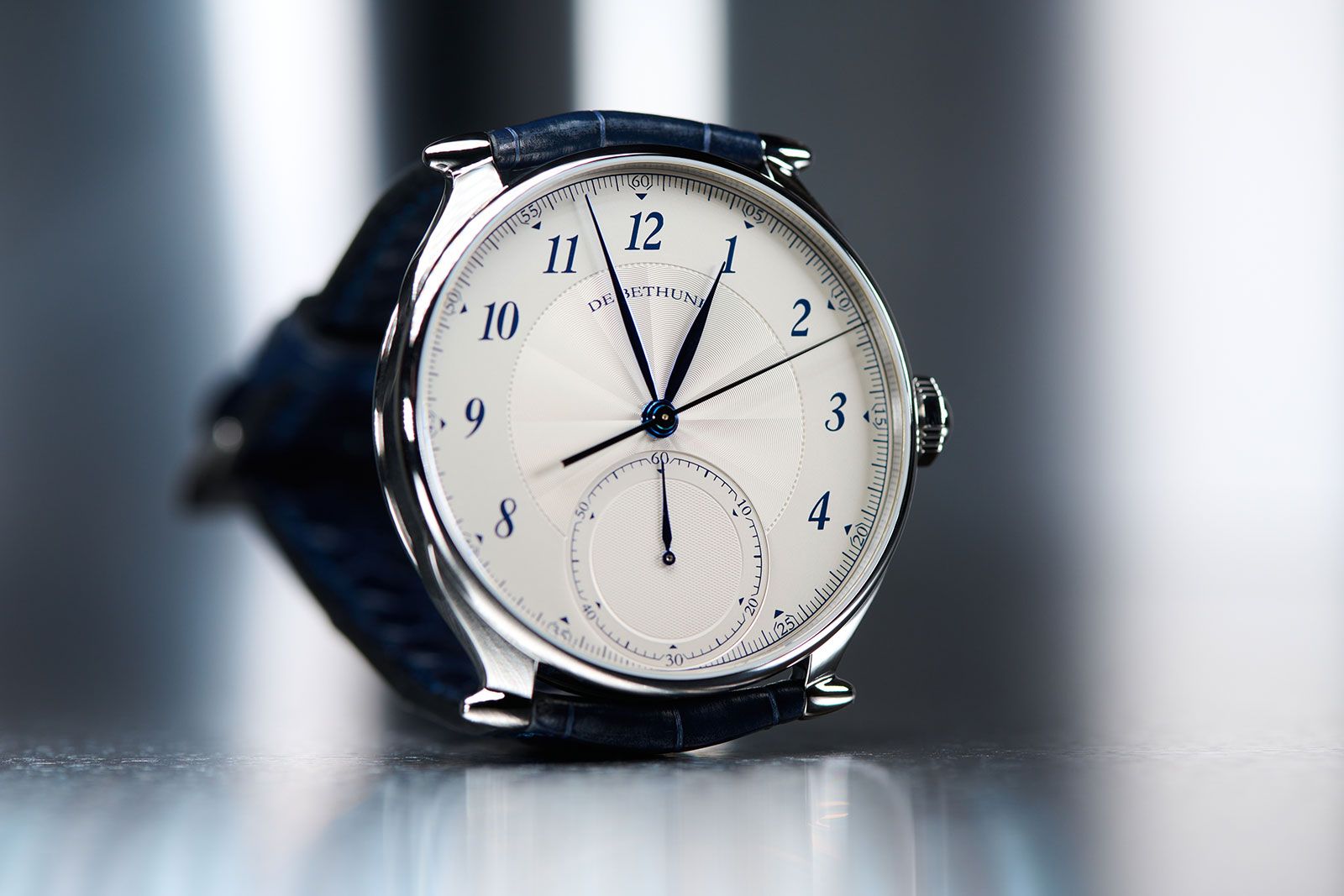
While De Bethune is best known for its avant-garde designs and signature spring-loaded floating lugs, the brand’s early years were characterised by more traditional styling. Fresh off the press, the DB Eight calls to mind the brand’s early products, most notably the DB1 mono-pusher chronograph from 2002, but adds many of the technical refinements that De Bethune has become known for.
Dressed in a polished titanium case and guilloché dial, the DB Eight fills a hole in the brand’s current line-up by offering collectors a simple, manually wound mono-pusher chronograph, albeit one that lacks the technical and decorative refinement collectors expect at this price point.
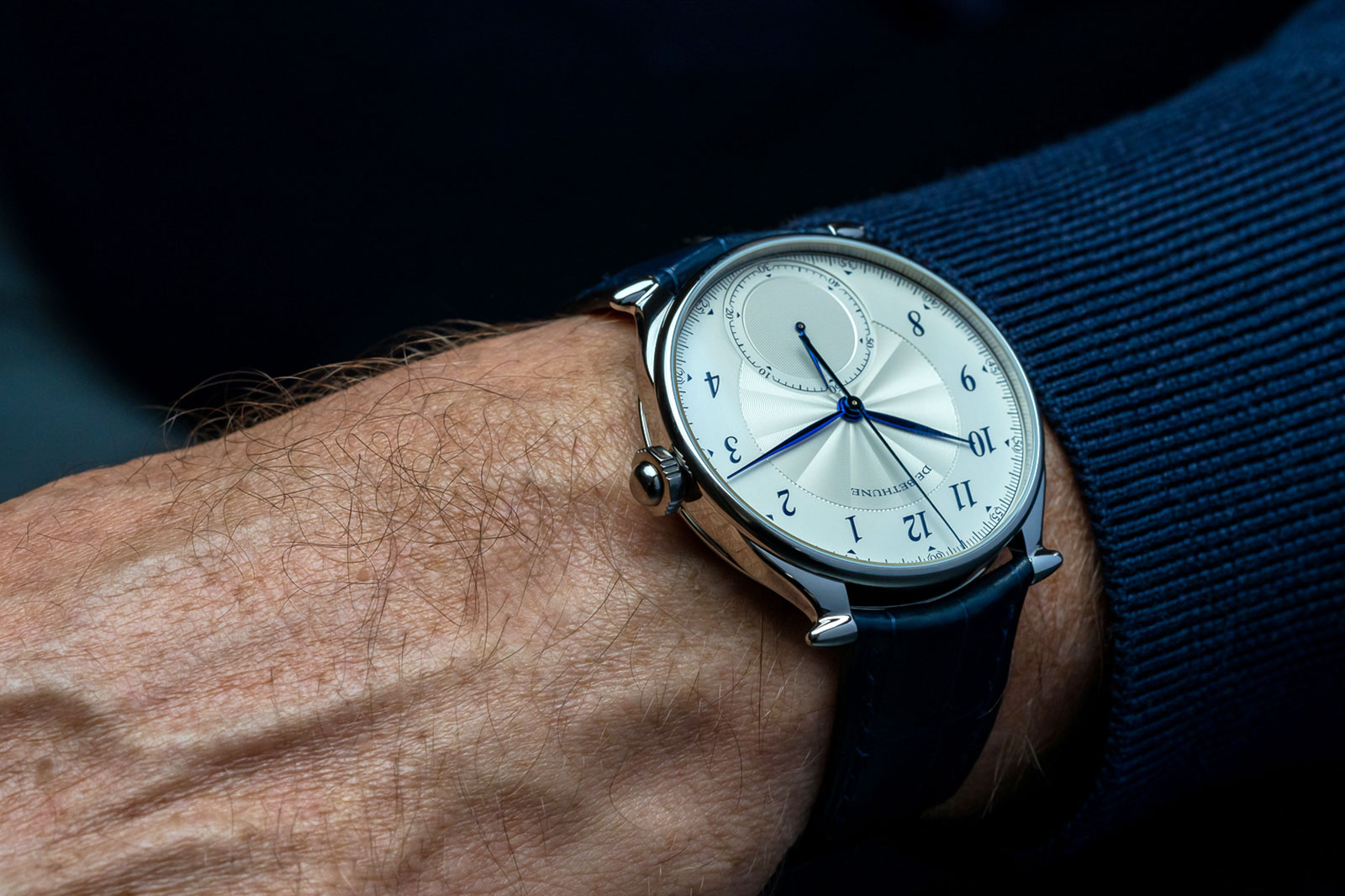
Thanks to its wide but slim case and narrow bezel, the DB Eight will likely wear larger than its 42.4 mm diameter would suggest
Initial thoughts
I’m probably in the minority when it comes to my preference for De Bethune’s more classically styled models like the original DB1. Given this preference, I naturally I gravitated towards the new DB Eight more than I have to some of the brand’s other recent offerings like the DB28XP. But while I like the design of the DB Eight, the substance does not meet my expectations for the brand.
Let’s start with the good news. De Bethune has addressed the cross-eyed look of the DB1 with a new movement that offers an instantaneous 60-minute counter for the elapsed time at six o’clock. This creates a balanced look that at first glance might even pass for a time-only dress watch. And while the hands could be mistaken for traditional heat-blued steel hands, they are in fact made of titanium – a De Bethune specialty.
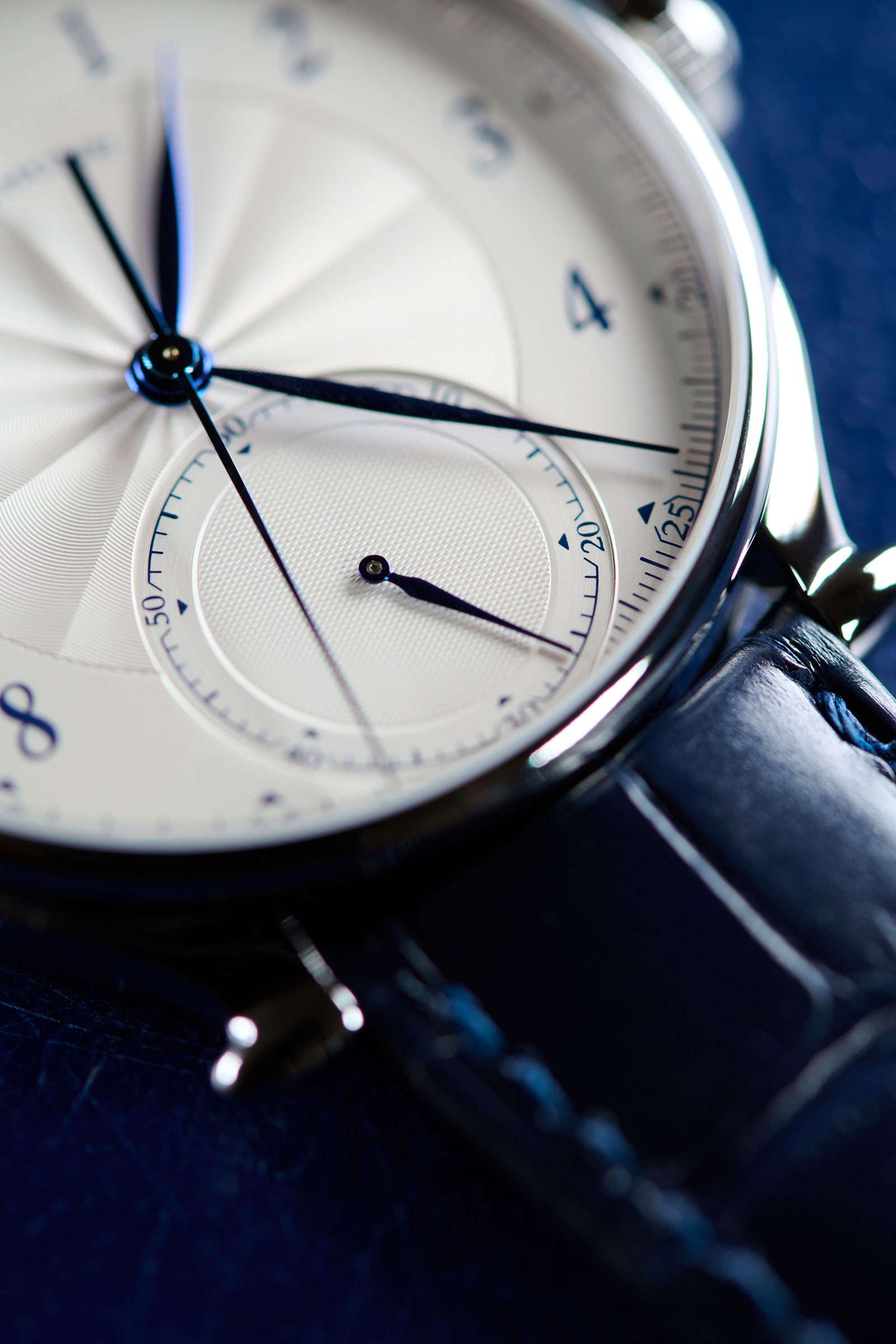
The highly legible instantaneous 60-minute counter for elapsed minutes
The case of the DB Eight is crafted in polished titanium, and features the brand’s signature bullet-tipped, “ogival” lugs that distinguished De Bethune’s earlier, more traditional designs. With its wide and slim case, thin bezel, and bright airy dial, the DB Eight will likely wear larger than its 42.4 mm diameter would suggest.
Unfortunately, the movement is not ambitious enough for a chronograph at this price point. The architecture lacks the coherent design found in other De Bethune movements, and the oscillating pinion is basic (the Valjoux 7750 is perhaps the most famous user of this mechanism). And while the finishing appears clean and thorough, it has an overly industrial appearance that lacks the character of comparable watches.
As a result, the DB Eight’s value proposition at around US$90,000 is dubious. Collectors looking for a high-end manually wound chronograph would do well to evaluate other options, including the Patek Philippe ref. 5172 and A. Lange & Sohne 1815, which offer more substance in terms of movement design and finishing – and cost less as well.
21 years of De Bethune chronographs
The design of the new DB Eight chronograph references the DB1, which was not only the brand’s first chronograph, but also its first watch. In 2002, when De Bethune was founded and the DB1 was launched, it was highly unusual for a new brand to hit the ground running with a chronograph.
Ordinarily, the development of a new chronograph would have been prohibitively expensive and time-consuming for a new brand. Luckily, De Bethune co-founder Denis Flageollet’s prior employer, Techniques Horlogères Appliqueés (THA), had developed a mono-pusher chronograph movement a few years earlier, famously used in the Cartier Tortue Collection Privé Cartier Paris (CPCP). Mr Flageollet was able to secure the rights to the THA movement for De Bethune.
While the DB Eight revisits the styling and manually wound, mono-pusher format of the DB1, the similarities end there. The cal. DB3000 is an entirely new, and unlike the DB1, it benefits from the brand’s proprietary escapement technology, which includes a patented terminal curve for the hairspring, a free-sprung titanium balance with gold weights, and a silicon escape wheel.
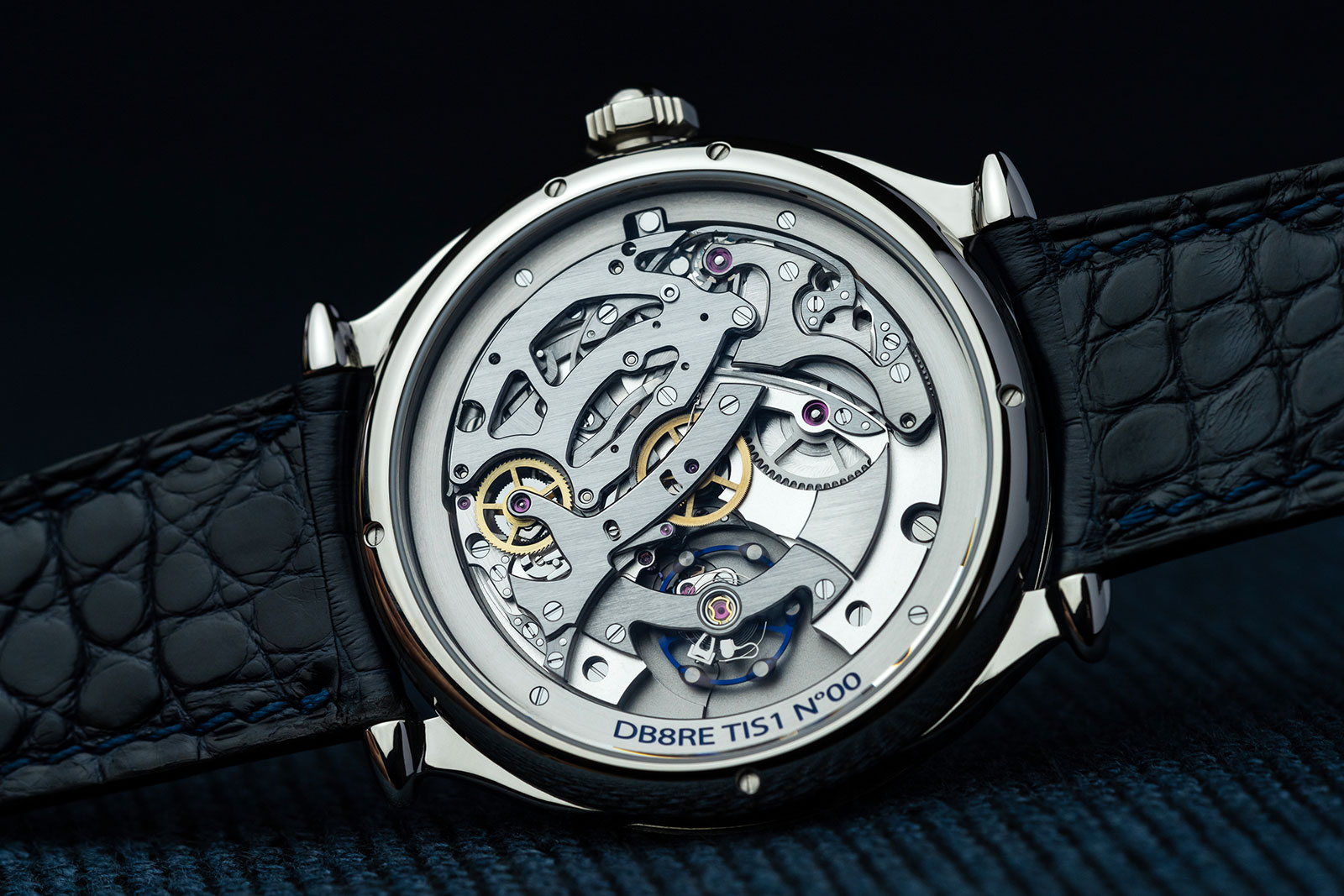
The finishing of the cal. DB3000 is more simplistic than that of prior De Bethune movements
The DB3000 also solves one of the main aesthetic problems of the DB1, which was the overly close spacing of the chronograph registers; the result of the movement being a lot smaller than the case. The new movement does away with the running seconds altogether, and moves the chronograph minutes counter, which is now instantaneous, to the 6 o’clock position. The elapsed minutes counter is especially legible thanks to both its size and its 60-minute format, which I find more intuitive than the more-common 30-minute counter.
That said, the DB3000 movement feels less ambitious than the brand’s other movements, especially the DB2030 Maxichrono introduced in 2014. While the Maxichrono featured De Bethune’s patented Absolute Clutch, DB3000 features a more ordinary oscillating pinion. Unfortunately, this means the new movement misses out on both the technical advantages of a vertical clutch and the more compelling visual drama of a lateral clutch.

In terms of design, the DB3000 lacks the spectacular architecture of the Maxichrono, which featured elegant, circular bridges in mirror-polished stainless steel. When it came out, the Maxichrono felt like a fresh vision for the future of the high-end chronograph, a format that tends to be overly reliant on midcentury designs like the Lemania 2310.
But the Maxichrono I examined suffered from reliability issues, which may explain why the brand left out so many of its key features during the development of the new DB3000. I’ve yet to handle the DB Eight in person, but I hope it retains the effortless pusher feel of the Maxichrono.
While I like the design and functionality of the DB Eight, I expect more from a watch at this price point. De Bethune has established an enviable reputation thanks to its unique approach to design and engineering, but the DB Eight feels out of place among the rest of the brand’s watches.
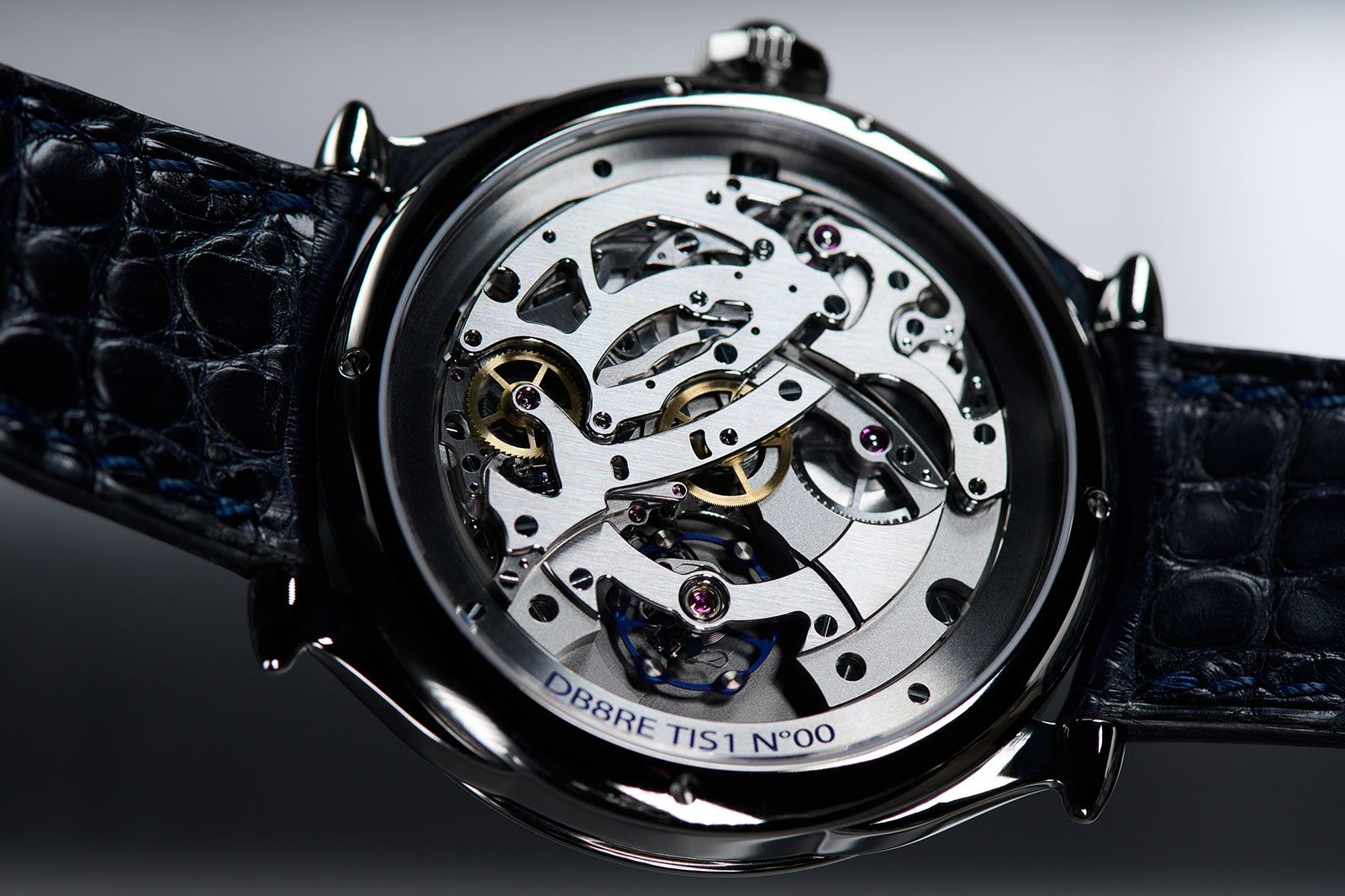
Key facts and price
De Bethune DB Eight
Ref. DB8RETIS1
Diameter: 42.4 mm
Height: 9.2 mm
Material: Titanium
Crystal: Sapphire
Water resistance: 30 m
Movement: DB3000
Functions: Hours, minutes, mono-pusher chronograph with 60-minute counter
Winding: Hand-wound
Frequency: 28,800 beats per hour (4 Hz)
Power reserve: 60 hours
Strap: Alligator with pin buckle
Availability: Now from De Bethune and its authorised retailers
Price: CHF85,000 before taxes (equivalent to about US$93,000)
For more, visit Debethune.ch.
Correction April 13, 2023: The power reserve is 60 hours and not 60 days as stated in an earlier version of the article.
Back to top.
